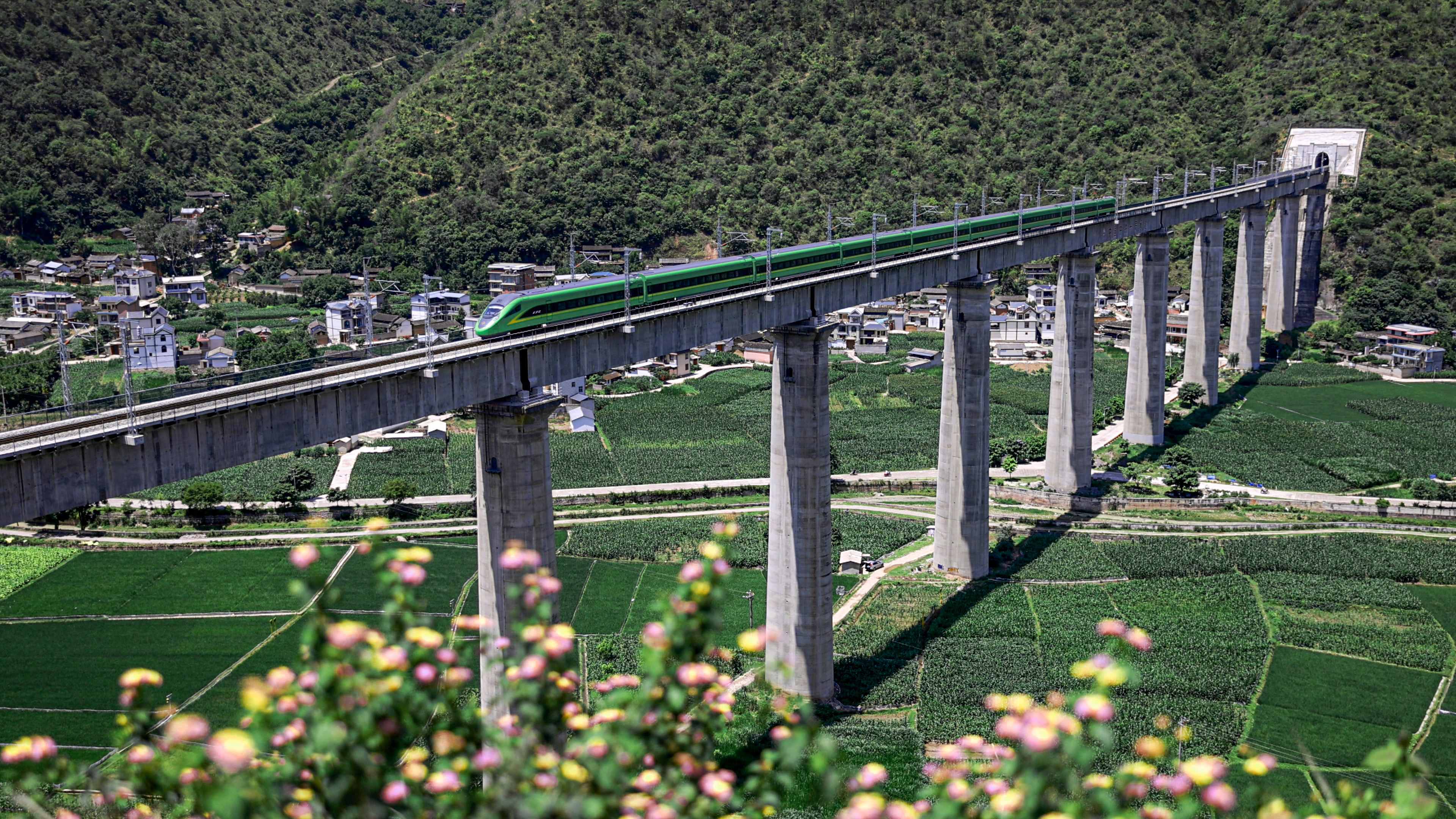The Dali-Baoshan Section of the Dali-Ruili Railway was put into operation on July 22, marking a significant breakthrough in the construction of the China-Myanmar International Railway Corridor.
With a total length of 330 km, the Dali-Ruili Railway originates at Dali in the east and runs westward to Ruili in Yunnan Province, a border city between China and Myanmar. The railway consists of two sections, where the Dali-Baoshan Section was currently completed as scheduled, and the Baoshan-Ruili Section is under proceeding in an orderly manner. With a designed speed of 140 km/h and a total length of 133 km, the Dali-Baoshan Section serves as a single-track electrified national class I railway, connecting Dali and Baoshan. There are five stations along the railway, including Dali, Yangbi, Yongpingxian, Baoshanbei, and Baoshan stations, among which Dali, Yangbi, Yongpingxian, and Baoshan stations provide passenger transport services, while Yangbi, Yongpingxian, and Baoshanbei stations handle freight services.
Situated in western mountainous area in Yunnan, the Dali-Baoshan Section of Dali-Ruili Railway runs through the seismic belt and longitudinal valley zone of the Hengduan Mountain range, and crosses various rivers, including the Yangbi River, Yinjiang River, Lancang River, and others. Therefore, it is one of China’s railways with the most complex topography and geological circumstances featuring high geothermal, high ground stress, and high seismic intensity. Since the commencement of construction in June 2008, CHINA RAILWAY had arranged the participating units to scientifically organize the construction, creatively overcome the challenges of geological disasters, and promote the project construction in a scientific and orderly manner. A total of 34 bridges and 21 tunnels were built along the line, with an overall length of 115.8km, making up nearly 87 percent of the total. In particular, the Dazhushan and Xiuling tunnels were built by overcoming geological disasters like collapse, mud inrush, and water gushing, as well as the Lancang River Super Major Bridge overcoming the effect of crosswinds in the valley, accumulating invaluable experience in building railway tunnels and bridges under challenging geological conditions.
Before the opening of the railway, CHINA RAILWAY meticulously organized testing & inspection before acceptance, safety assessment of equipment in different specialties, and comprehensive optimization & adjustment of the track status, pantograph-catenary performance, train control, communication and signaling system, in strict compliance with relevant regulations and standards. The railway has already been accepted in all aspects up to the requirements of safe and stable operation of passenger and freight trains, fully ready for the upcoming operation.
Seven pairs of passenger trains, including three pairs between Kunming and Baoshan and four pairs between Dali and Baoshan, are scheduled at the initial operation stage of the Dali-Baoshan Section. The shortest travel time are 3 hours and 26 minutes from Kunming to Baoshan and 1 hour and 9 minutes from Dali to Baoshan. Five pairs of freight trains are scheduled to run, making it possible to quickly transport building supplies, chemicals and agricultural products from Dali to Baoshan.
The Dali-Baoshan Section of Dali-Ruili Railway has important location as it passes through the places populated by ethnic minorities including the Bai and Dai ethnic groups, where the original ecological tourism resources are abundant. Putting an end to the history without a rail connection in Baoshan and other areas, the opening of the railway section will further improve the railway network structure in the western border regions, greatly facilitate the travelling of people from various ethnic groups and delivery of goods along the route, and boost the development of tourism industry in western Yunnan, which is of great significance to promoting ethnic harmony and rural revitalization. The Chinese section of the China-Myanmar International Railway Corridor will be fully finished with the entire completion of the Dali-Ruili Railway, and the Dali-Baoshan Section will, by then, make a more prominent contribution to the development of the "Belt and Road" and China-Myanmar Economic Corridor.
(Photo by Zhou Tao)

 附件:
附件: